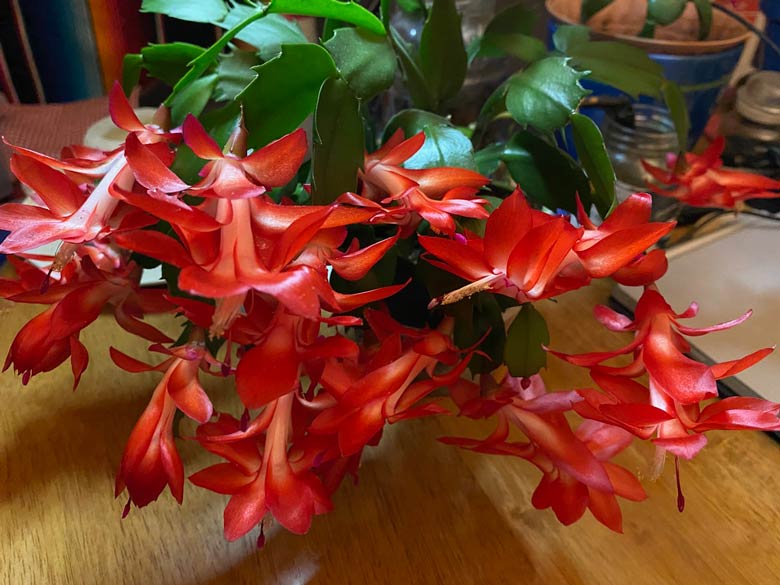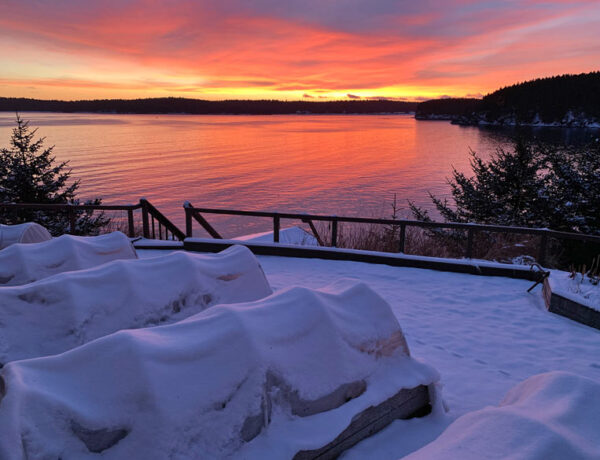Can you think of a silver lining spawned by COVID-19? It’s a challenge, isn’t it, what with many countries setting records for daily coronavirus infections
Then, out of the blue, one of my newsletter subscribers from Switzerland emailed a message, bearing a positive bent to the pandemic:
“Yes, we need to learn something from this! I’m actually savoring the slower pace of life…and enjoying our home and garden more! Our garden has never looked so good as this year.”
And if that wasn’t enough, she added a smiley emoji in place of a period.
[Hi there! This organic gardening article was originally published in the Kodiak Daily Mirror, the hometown newspaper for Kodiak, Alaska. You can access the archive page for my past columns, written each week since 1986].
It’s not what life hands us, but how we react to it.
[perfectpullquote align=”full” bordertop=”false” cite=”” link=”” color=”” class=”” size=””]I don’t believe in pessimism. If something doesn’t come up in the way you want, forge ahead. If you think it’s going to rain, it will. — Clint Eastwood[/perfectpullquote]
I’m not fawning like a Pollyanna. Friends and family members have become ill with the COID, and died from its complications. And my friend in Switzerland chooses to keep turning toward the light, in spite of the country’s path to becoming Europe’s top COVID-19 hot spot.
It’s these things that whirl around my brain toward the end of each week as I ponder what to write about. Sometimes it’s not easy to blend the myriad of topics that come up into a weekly column.
Take potatoes, for example…
Recently, a local gardener, after harvesting her last potato (and just in time, judging from the weather forecast) asked, “What are these ugly blotches on my potatoes? Are they safe to eat?”
The short answers: ‘scab,’ and ‘yes.’
Common potato scab, I told her is a common disease that shows up from Africa to Arizona. It’s caused by a microorganism called S. scabies which, believe it or not, is present in nearly all soils.
So what causes ugly “warts” to appear on potatoes?
Here’s the thing:
Scab flares up when the soil pH climbs above 5.0. When we speak of pH, it applies to wine-making, cheese-making, swimming pool maintenance, hydroponics – lots of things in our world.
When it comes to soil, having the right soil pH is key to growing a healthy garden. But its importance is often overlooked. While nutrients and other factors are also crucial things to consider, the pH of the soil plays a major role in how well your plants can absorb the nutrients you provide them. So it’s important to get it right!
Now don’t panic. The wrong pH often won’t kill plants outright. But it can affect their growth, depending on how sensitive the plant is. To be real, many plants are able to adapt to a range of pH levels. You may have heard how hydrangeas (they grow on another planet, not in Kodiak). Hydrangeas produce different colored flowers, from blue to pink, depending on whether they’re grown in acidic or alkaline soil.
That said, a pH of 6.5 is just about right for most home gardens, since most plants thrive in the 6.0 to 7.0 (slightly acidic to neutral) range. Some plants (blueberries, rhododendrons) prefer more acidic soil, while a few (beets and pole beans) do best in soil that is neutral to slightly alkaline.
Back to our potatoes…
The scab lesions develop on the skin of the potato, not the inside. And while it doesn’t affect how it tastes, spuds affected with it do not store well. Which means, eat them soon.
How do you adjust your soil pH?
I’ll cover this topic in a future column, but as a reminder, mark your calendars: The best time to check your soil’s pH is in the spring with a soil sample that you send to a designated lab. (Hmmm, I’ve never taken a soil sample in the fall, I wouldn’t rule it out). One good reason is to beat the crowds: Soil-testing labs become quite busy in the spring…
Now let’s look at a different topic that came up this week:
Spider mites
Listen up: If you bring your geraniums inside to bloom over the winter — or anytime you purchase a houseplant — double and triple-check for pests.
Why? One of the worst pests to introduce to your interior space are spider mites. Piggy-backing on outdoor plants is just one way they end up in your home or office. Also, be careful if you’re ever “gifted” a plant. You don’t need to look a gift horse in the mouth, but many times these plants that once lived among thousands of others, harbor pests like fungus gnats, aphids, and spider mites.
Before you see the mites, you’re most likely to see the damage they cause: curled or distorted young leaves. Grab a magnifier and take a look. If your suspicions are positive for spider mites, here’s what you do:
- First, quarantine your plant immediately so its neighbors don’t become infested.
- Then, dip or spray the plant with insecticidal soap. Misting your plants on a regular basis will help prevent mites, by the way, since they thrive in a warm and dry atmosphere.
- If that doesn’t work, you may need to send the plant to the great compost pile in the sky.
Finally, here’s another silver lining… and this one I spotted on Facebook, as a post by local gardener Pam Foreman. Her apartment right now is a forest of Christmas cactus in full bloom.
“In an apparent effort to make things about 2020 better, some of my Christmas cacti are blooming earlier than usual.”
Have a wonderful week,

++++++++++++++++++
About these garden columns… Slowly but surely I’m posting over 1,200 articles that you can access here. For personal updates, sign up for my newsletter, the Garden Shed: All Things Organic Gardening. As a thank you for signing up, you’ll receive a FREE PDF: 220 Things You Can Compost. (I’m also on Facebook and Instagram). To get in touch by email: marion (at) marionowenalaska.com





No Comments